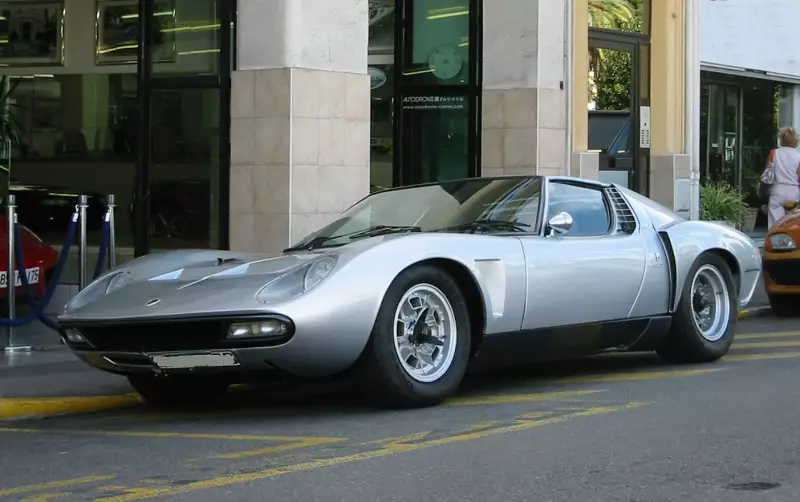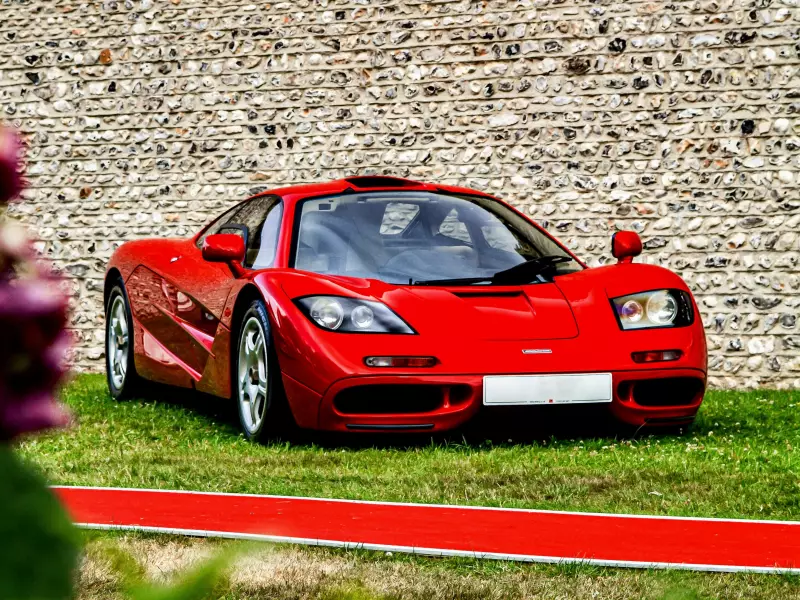Exotic cars are the beauty queens of the automotive world, sitting at the peak of several categories. They're sought after for their rarity, performance, and technological qualities, which coalesce in one sleek package.
Serious collectors and everyday people alike are drawn to these extraordinary machines. Their role as a means of transportation is secondary. Exotic cars are a statement you can drive around that sets you apart from the copy-and-paste models on the road.
The dream of owning an exotic car is lifelong. It's held in childhood but often forgotten about until earning the magical power of a steady income. If you want to get some ideas for fulfilling this dream or want to admire some of the greatest cars in history, you've come to the right place.
What Are Exotic Cars?
Some people believe exotic cars must have a limited run or wield unbeatable power under the hood. Hardcore brand loyalists may also argue that only cars from certain countries like Germany or Italy can qualify as "exotic."
In terms of performance, exotic cars are often compared to supercars. They excel in metrics like acceleration, top speed, and dynamic handling, pushing the boundaries with customized builds and features. The extra care for these vehicles is why many exotic cars must be handcrafted.
What Makes a Car Exotic?
The truth is: there's not a universally agreed-upon definition for exotic cars. Aside from a hefty financial commitment, several characteristics are commonly reserved for these vehicles.
Unique Build
Hand-made cars are considered exotic because of their one-of-a-kind reputation and the limited number of artisans with the skills to make them. Manufacturers like Aston Martin and Rolls-Royce have built their names on the personal attention given to each vehicle.
Assembly line vehicles are made comparably cheaply to minimize costs in big productions. This focus on cost precludes stock models from the more expensive customizations and luxuries found in many exotic builds.
Higher Costs
The price tag of exotic cars adds to their exclusive allure, reflecting their status as symbols of wealth and luxury. Few people can responsibly afford these vehicles, which is why so many opt to rent them for special occasions. However, depending on the car, even temporary ownership will run you thousands. The insurance on rentals alone can be upwards of $500.
The increased costs don't stop when you drive an exotic car into the driveway. These vehicles have custom parts and rare materials that are in low supply. This means maintenance costs are often significantly higher and may even require a specialized mechanic specially trained for the brand.
Limited Availability
Many exotic models are designed with features targeting a niche market. After paying an exorbitant cost, nobody wants to see five other people driving their car down the highway. There's a special feeling when you walk through a crowded parking lot and can immediately tell which car is yours.
Additionally, many exotic models are built with signature traits that set them apart. People are attracted to singular features like how the Lamborghini 350 GT's headlights popped out of the front. While you may see these features repeated in the future, being the first model to have it goes a long way.
Powerful Engine
Sleek aesthetics catch your eye, but the power you feel behind the wheel is what many exotic car enthusiasts live for. Many modern exotic cars house engines with top-tier horsepower and can reach a speed of over 200 miles per hour.
These vehicles' acceleration is also fantastic, allowing them to reach top speeds before other drivers even realize the light has turned green. While there are old, stock vehicles that become exotic due to their rarity, the younger models have to have the power to back up their status.
Cultural Reputation
Manufacturers in countries like Italy, Germany, and Japan have long histories in the industry. Kids used to talk about the Lamborghinis and Ferraris of the world. Most of us didn't know the name of a single one of their models, but we knew the brand.
We equate them with excellence, and they established an international reputation for their respective countries.
Nobody thinks of American manufacturers when shopping for an exotic car. This isn't a critique of US cars, but our country doesn't have a reputation in the field. America has incredible vehicles like the Hennessey Venom GT and the Mosler MT900, but they're overshadowed by the more culturally famous and established names.
Iconic Exotic Cars Through the Ages
The 1935 Duesenberg SSJ was one of the earliest contenders for the title of supercar. It reached a top speed of 91 mph and featured the most powerful engine on the market at the time. Duesenberg, still reeling from the Great Depression, went bankrupt in 1937, so the world never got to see past the Model J.

Ultimately, the Duesenberg was a flash in the pan. It wasn't until 1966 that Nuccio Bertone created the car that dropped jaws worldwide: the Lamborghini Miura. The Miura was the fastest production road car to date, setting a new standard for international supercars.
This one car gave manufacturers and designers a peek at what an exotic supercar could do. Named after a Spanish fighting bull, the Miura was fittingly powerful. Its mid-engine layout achieved a top speed of 178 mph and could go 0 to 60 in 6.7 seconds.
It's hard to overstate the Miura's impact on the history of exotic cars. It had the power of a race car with an engineering tailored for ordinary streets. It had far more space and luxury features than similarly powered cars like the Ford Mark III.
The '80s were a magical time for exotic cars. Public interest in beautiful and powerful vehicles skyrocketed, and manufacturers took note. Rather than following Lamborghini's philosophy, the general trend was to take existing racing cars and re-engineer them for the public.

Ford's RS200 Evo could go 0 to 60 in 3 seconds flat. The Aston Martin Bulldog focused on an aerodynamic design meant to shatter the 200 mph speed barrier. The Ferrari F40 required a skilled driver to even keep straight on the road, lacking ABS and power steering.
There are many other examples, but the 80s were a time of strength over usability. Manufacturers didn't want a safe road car and instead marketed exotic cars to people craving the thrill. People wanted to know that their car could beat anyone on the road if they wanted to.

The McLaren F1 burst onto the scene in the 1990s. It was built with carbon fiber, a light and sturdy material that allowed manufacturers to pack racing engines into an absurdly light frame.
However, there was also a shift toward creating more street-level cars. Previous models were too fast and dangerous, causing people to stick to closed tracks. The Honda NSX didn't focus purely on speed.
It was made with aluminum instead of carbon fiber and offered a more affordable price than competitors. Journalists who saw the NSX at the Laguna Seca Circuit gushed, with one writing, "All the cars we currently have are now history."
By now, the standard "look" of the exotic car was well established. Although many cars break the aesthetic norm, like the Ford RS200 Evo, most opt for a sleek and aerodynamic appearance. With aesthetics less of a question, manufacturers started paying more attention to the technology.
Manufacturers split into two groups, with some reducing the vehicle's overall weight and others pumping more power into the engine. One of the most notable developments of the 2000s was the Venturi Fetish.
The Fetish was launched in 2004 as the world's first electric sports car. It challenged popular perceptions that EVs lacked power and range. Although it fell short of most supercars, the Fetish's top speed of 105 MPG far surpassed that of other EVs of the era.
Today, exotic cars have reached such incredible levels of power and aerodynamics that a new term is being used: hypercars. Track times are increasing, and safety features are being more efficiently added to avoid increasing weight.
Most manufacturers are attempting to build hybrid or fully electric engines, but achieving the same speed and acceleration as gasoline is a big hurdle. One of the most significant problems is the significantly increased weight of an electric car's battery.
However, that isn't stopping anyone from trying. Even old-name manufacturers like Porsche are rolling out electric hypercars with the Mission X they released in 2023.
Conclusion
Exotic cars are the culmination of decades of research. Designers have ground down the frames and strengthened the engines to almost ridiculous degrees. However, these acts of constantly pushing past the vehicle's limits are what fascinate millions of people.
For others, exotic cars are a status symbol prized for their rarity. They crave the feeling of being the only one on the road in a one-of-a-kind vehicle and knowing they could leave everyone behind in a breath.
The future of exotic cars is undoubtedly turning toward electric upgrades, and the day that EVs will achieve similar performance to gasoline is likely not far away. Who knows what's next on the horizon?








![Best Sites to Check a Car’s History [2025 Review]](https://media.infopay.net/thumbnails/K8lMeG2QLjE46LPqZlmoi6SunKKdT5qvlaRZk6e1.webp)










![Best Sites to Check a Car’s History [2025 Review]](https://media.infopay.net/thumbnails/K8lMeG2QLjE46LPqZlmoi6SunKKdT5qvlaRZk6e1-w356.webp)
